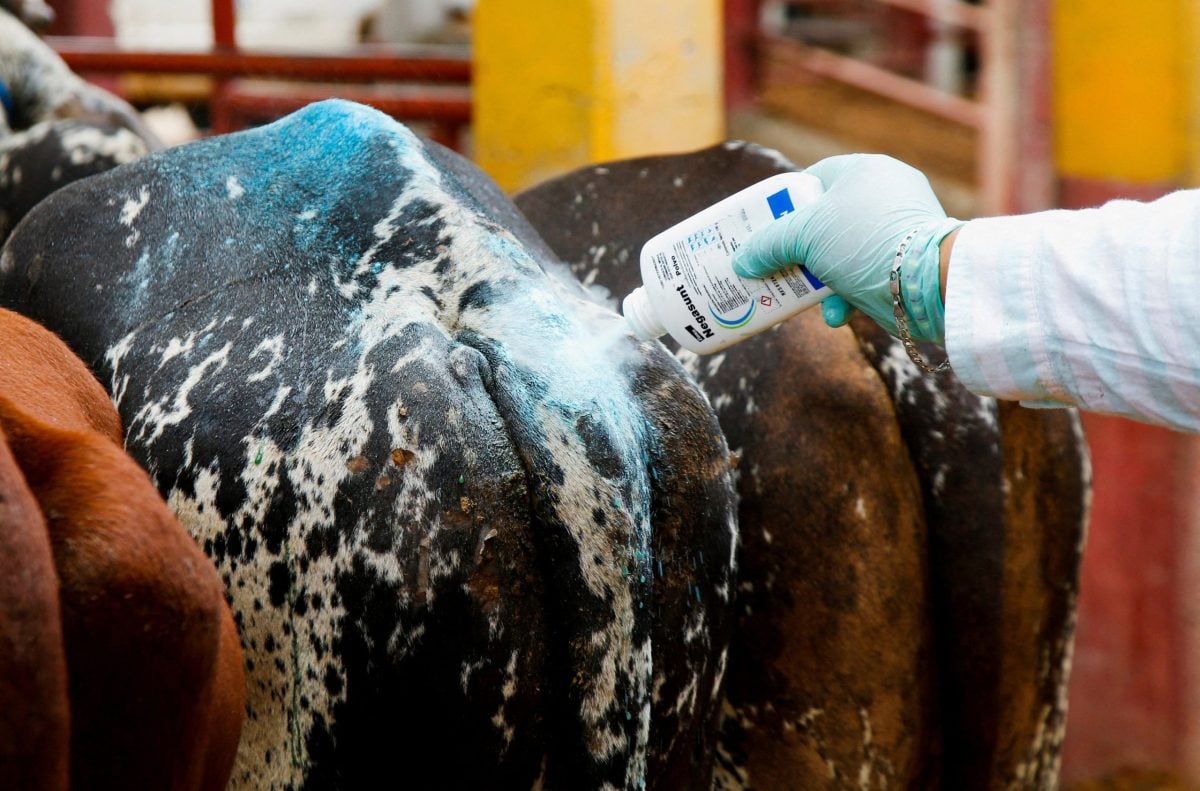The source of what’s believed to have been an “isolated” recent case of porcine epidemic diarrhea (PED) in southern Alberta was likely either feed or some object brought into the barn, veterinary officials say.
The chief provincial veterinarian’s office said it was informed by a private veterinarian on Feb. 24 of a suspected case of PED at a farrow-to-finish operation in southern Alberta, with no other cases reported or detected since then.
As of March 10, the province said in a statement, its investigation “continues to find that this is a single, isolated case” and environmental surveillance is still showing negative results. On the affected farm, “the virus elimination process is moving along well.”
Read Also

Mexico agriculture secretary says still no date for restarting cattle exports to U.S.
Mexican Agriculture Minister Julio Berdegue said on Wednesday that Mexico and the United States have not yet set a date to resume Mexican cattle exports amid an outbreak of the flesh-eating screwworm parasite.
Compared to Manitoba and Ontario, both of which have continued to see cases of PED in hogs, Alberta’s hog sector has been relatively unscathed by the disease. Four premises were affected in an outbreak over the first three months of 2019 in the Drumheller and Lethbridge areas; no other cases had been seen in Alberta hogs before or since.
The province said its investigation has looked further into potential sources of the virus at the farm, but cautioned that “pinpointing a source with full confidence is not always possible,” as was the case in 2019.
In the February case, “two likely possibilities have been found, but neither can be ruled as more likely than the other,” the province said.
Testing done at the farm suggested a feed ingredient, given to hogs in the area where disease was initially noticed, could be a potential source, the province said.
The other identified potential source, the province said, was fomites — that is, inanimate objects, such as tools or clothes, on which pathogens can be carried and transferred to new hosts — which were known to have been moved into the barn “in the immediate vicinity where disease initially broke.”
Either way, the province said, both potential sources “serve as a reminder for the importance of implementing a comprehensive biosecurity plan, including feed storage, fomites and people movement.”
The province’s environmental surveillance program for PED has since been “enhanced in key high-traffic swine sites,” the government said, and “all results to date remain negative.”
The coronavirus that causes PED can affect hogs at any age, leading to watery diarrhea and vomiting. It’s most damaging, however, on farrowing operations, as it’s very often fatal to newborn pigs under seven to 10 days old.
PEDv is not known to affect people or any other species and is not considered a food safety issue.
Since it first arrived in Canada on an Ontario farm in 2014, PED has been seen in hogs in four other provinces besides Alberta. Manitoba so far in 2022 alone has seen 55 premises with PED-infected hogs, most recently two finisher barns confirmed with the disease last Friday (April 1).
Ontario so far in 2022 alone has reported seven premises with PED-infected hogs — most recently a nursery barn in Huron County confirmed Wednesday — and two premises with a related disease, porcine deltacoronavirus (PDCoV).
Quebec and Prince Edward Island also each reported cases following the disease’s arrival in Canada. — Glacier FarmMedia Network












